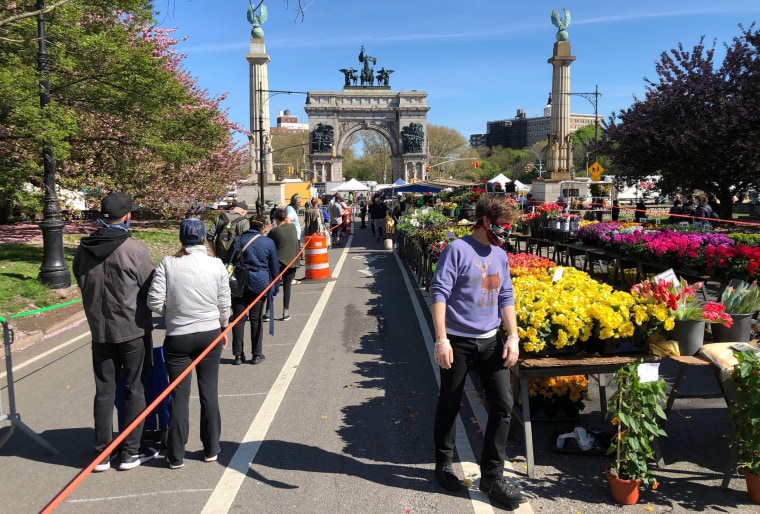After 12 years as an event planner, I know how difficult it can be to convince crowds of people to behave the way you’d like them to: "Don’t walk over there." "Do things in this order." I’m great at creating guidelines that would work really well ... if everyone would just, please, follow them.
They never all do.
So, with many governors preparing to reopen states and even allowing some public events to take place, I’ve already heard well-intentioned colleagues discuss various coronavirus mitigation plans, like adding hand sanitizer stations and signage. (“We’ll just add signs” are famous last words in the event planning business.)
Overestimating people’s rule-following tendencies is one of the biggest mistakes event planners — and our bosses and clients — make.
My governor’s favorite phrase right now seemingly is, “I trust Iowans to do the right thing.” It’s a nice sentiment, but it’s not a great policy for keeping people safe in a crowd. As a rule of thumb, planning for what people will be naturally inclined to do, rather than fighting it, works best.
For instance, in a previous job, I managed an outdoor amphitheater where we were told to paint lines on the grass to indicate ticket levels; the more expensive tickets were, of course, closer to the stage. The plans looked great on paper, but they failed epically the minute the crowd was let in. The lines, under people's feet in an ever-darkening space, became meaningless to attendees and impossible for staff to police. Everyone just migrated to the front, as they do at every other open-seating concert.
Planners and policymakers trying to find ways to have safe, socially distant events will have to fight what people are naturally inclined to do — what they’ve done their entire lives — at every step. Being close to strangers in public places has only been the “wrong” thing to do for a few months. Telling people it’s OK to be at a big event but not to get too close will be a confusing line to draw.
Confusing, complicated rules do not make for happy or compliant attendees.
Even relatively simple rules — like the one-way arrows now painted on many grocery store floors — are already causing consternation. The people who follow them are none too pleased by the people who don’t, whether they’re ignoring them maliciously or obliviously. Short of having a 1-to-1 ratio of grocery store employees to customers, though, displaying huge arrows on the floor is pretty much as good as it gets when it comes to giving people directions they're not used to or likely to follow.
The same is true for events.
When I absolutely need event attendees to follow a rule they wouldn't normally, I throw out the signs and use a human; it's the only way. Humans listen to other humans pretty well, but adding extra staff to enforce COVID-19 rules, therefore increasing the total number of people at potential risk, presents its own challenge.
Event planners have encountered plenty of problems. I’ve personally been yelled at by a clown, called 911 for many drug overdoses and dragged overzealous fans off various stages. We’ve all fixed countless technical glitches and switched to our rain backup plans at the last second. There’s hardly a situation we haven’t planned for or fixed on the fly — so it makes sense that so many are trying to come up with solutions to the current conundrum.
But from state to state and event to event, protocols created by individual organizations will vary significantly — a mix of the bare minimum rules and whatever else the coordinator thinks will help — which will make it tricky for even the best-behaved attendees to follow along. In my town, for instance, where organizations are actively communicating and working together, there’s already confusion: Citizens will be encouraged to wear a face mask while visiting (at least) one of the farmers markets when it opens but are free to go without when they enter the clubhouse at the golf course.
Beyond that, most organizers are under intense financial pressure to bring events back, but they have limited knowledge about how to do so safely because very few (if any) event planners are experts on public health. I’m great at explaining why you should cut the cake before you sit down to dinner at your wedding reception — you don't want 300 cake-desiring guests staring at you as you try to finish your meal — and I’m trained in tougher subjects, like how to safely evacuate a building full of people.
But I’m no more knowledgeable about respiratory virus transmission than the general public, and to try to keep people safe, I’ll have to rely on state-mandated rules — rules created on pieces of paper by government officials far away from the crowds themselves.
There will be lots of frustrations and complaints as events begin again but also, I hope, a few glowing examples of solidarity. I’ve seen crowds unite to help people who’ve been injured, and I've seen them shield vulnerable strangers from drunken aggressors. All the examples I can think of involve people coming closer together to help, not staying further apart.
Unfortunately, everything we’re supposed to do and not do right now to stay safe goes against our basic instincts. The rules are new for everyone; relying on people to "do the right thing" is likely not going to be enough.





